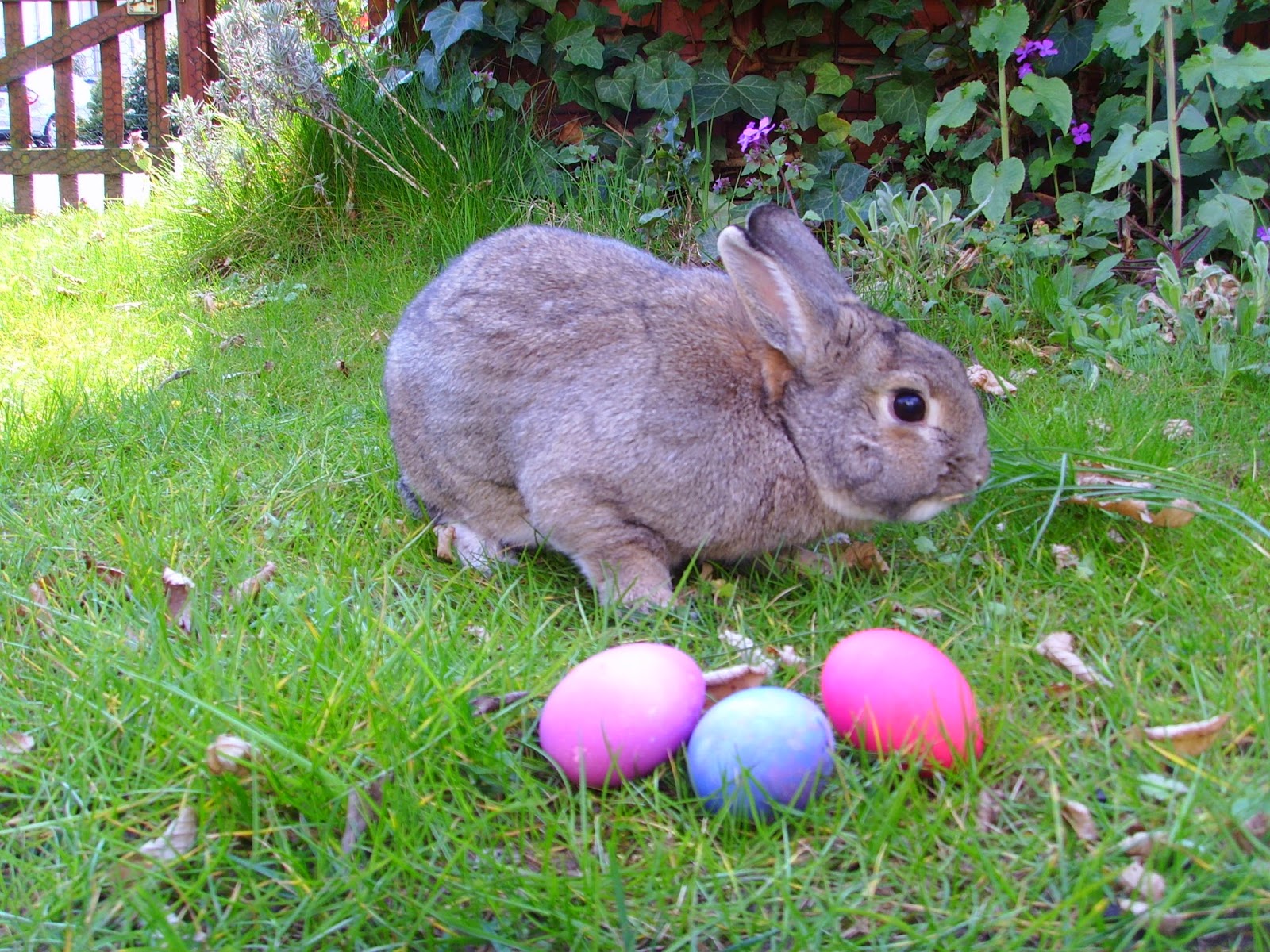On Easter Eggs
Pastor’s Epistle—April,
A.D. 2014 A
Bunnies, Eggs, and Resurrection
Well,
folks, we come to it at last: the great celebration of our time. April brings
us Holy Week and Easter, our “Sunday for the year,” and everyone is invited!
Things kick off with Palm Sunday on April 13th; we’ll only have one
service that morning at 9:00 a.m., complete with the Procession with Palms and
the reading of the Passion Narrative. Holy Week then continues with the
Triduum, or “Great Three Days,” of Maundy Thursday, Good Friday, and Easter
Vigil on Holy Saturday. Each Triduum service begins at 7:00 p.m., and each one
is completely unique! We only celebrate Maundy Thursday, Good Friday, and Easter
Vigil once per year apiece.
Maundy
Thursday will be our occasion to celebrate First Communion for our fifth and
sixth graders who have completed Eucharistic instruction; it also includes
(voluntary) foot washing, the stripping of the altar, and much more. Good
Friday remains the most solemn service on the Church calendar. And Easter Vigil—well,
that’s the first Easter service of the year! We’ll light the new fire,
illuminate the darkness, hear the story of God’s steadfast promises to His
people, and celebrate the Risen Lord. Easter services will continue with a “sunrise
service” at 7:00 a.m. Easter morning, and worship as usual at 9:00 a.m.
Families and guests alike are encouraged to bring bells from home, which will be rung from the pews during
parts of the liturgy.
Now
that everyone knows the details of our Holy Week festivities, and everyone
knows that each and every member of this community (or any other communities)
is invited to all of the above, I wanted to take a quick moment to touch upon
two of the most ubiquitous Easter symbols on our minds and store shelves this
season: Easter eggs and the Easter bunny. That might seem like a bit of a lurch
in topic, but bear with me. Common opinion appears to be that bunnies and eggs
don’t have terribly much to do with the Resurrection of Jesus Christ—that they
are but generalized symbols of spring. Bunnies have to do with fertility,
right? And pastel eggs evoke the colors of new growth and the promise of new
life. Some people even claim that Easter eggs hail from pagan origin. That, my
friends, is simply not true. Easter eggs are, in fact, Jewish.
It’s
true! The earliest representations of Easter eggs go back to icons (holy
images) of Mary Magdalene, the first person to witness Jesus’ Resurrection and
to preach it to others. This is why Mary Magdalene is honored as “Apostle to
the Apostles.” Anyway, ancient icons of Mary portray her standing before Jesus’
empty tomb holding an egg. Her eyes, robe, and even the egg are tinted red. That’s
because the color traditionally associated with Mary Magdalene is red from her
weeping eyes; remember that she wept when she found the Christ was missing from
His tomb. That explains why in art she’s red and by the tomb. But what about
the egg?
Easter,
remember, is a Passover celebration. Jesus’ Last Supper was a Passover meal;
the Eucharist that we share involves the flat bread of Passover; and in fact
most Christians throughout the world call our Lord’s Resurrection not “Easter”
(a German word) but Passover. And the
Passover meal, in Jewish tradition, involves cooked eggs as a sign of mourning!
Why eggs? Because they were easy to prepare, transport, and offer to mourners
to eat whenever they were hungry. Roasted eggs were the funeral hotdish of the
First Century. To this day, observant Jewish people twice dip a cooked egg in
saltwater during the Passover meal to indicate mourning and grief. Mary holds
the egg because it is a sign of her grieving, of her weeping, and of the
mournful tomb behind her. And it is colored red to remind us of her teary eyes.
More elaborate decorations evolved over time.
Thus,
the Easter (Passover) egg. But what about the bunny? Ah, that’s a later
tradition—and you can blame him on the Lutherans! Back in the Middle Ages,
people studied the natural world not simply to explore biology but to
illustrate moral lessons. The peacock warned people not to be vain. The
pelican, in feeding its young with its own blood, illustrated Christ’s
self-sacrifice for His children. (Pelicans don’t really do this, but that’s not
the point.) And bunnies—or rather, hares—were believed to be hermaphroditic, so
that they could have children by
themselves. In other words, people thought that rabbits were capable of “virgin”
birth! Because of this, in the late 17th Century Lutherans used
rabbits and hares to represent the Virgin Mary, Mother of God, and decorated
churches with rabbits to remind us of our Lord’s Incarnation and Christmas
birth.
The
Easter bunny is a symbol of the season because the Annunciation, or Lady Day,
falls near Easter. Annunciation is the day when Mary agreed to be Jesus’
mother, and conceived by the Holy Spirit. A pregnant Mary, of course, heralds
the birth of Jesus Christ and, by extension, His “rebirth” in the Resurrection.
So there you go. Easter eggs go all the way back to the Passover celebration,
and the Easter bunny is a medieval representation of God’s Incarnation in the
womb of the Blessed Virgin Mary.
Obvious,
right? Everybody knows that. But I’m still baffled by plastic Easter grass.

Comments
Post a Comment